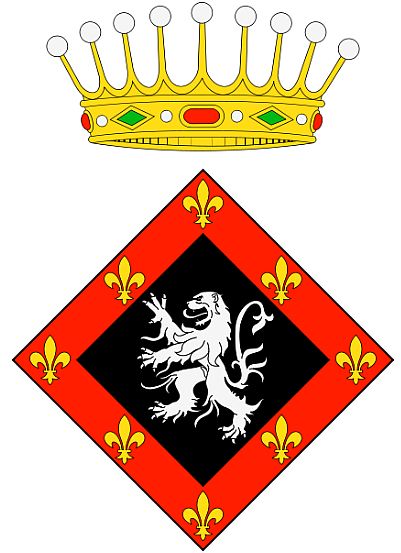Foixà: Difference between revisions
Jump to navigation
Jump to search
Knorrepoes (talk | contribs) No edit summary |
Knorrepoes (talk | contribs) m (Text replace - "[[Literature" to "{{media}} [[Literature") |
||
| Line 19: | Line 19: | ||
Foixà was the centre of a barony (in the 12<sup>th</sup> century); near the castle, in 1395, the king Joan I was dead by accident while he was hunting. The baron was promoted to count in 1866. The arms are the ones of the barons (later counts) of Foixà, and at the top there is the count's crown. | Foixà was the centre of a barony (in the 12<sup>th</sup> century); near the castle, in 1395, the king Joan I was dead by accident while he was hunting. The baron was promoted to count in 1866. The arms are the ones of the barons (later counts) of Foixà, and at the top there is the count's crown. | ||
{{media}} | |||
[[Literature]] : Image taken from Wikipedia; background from Enric Fontvila, Barcelona. | [[Literature]] : Image taken from Wikipedia; background from Enric Fontvila, Barcelona. | ||
Revision as of 21:36, 8 July 2014
| Heraldry of the World Civic heraldry of Spain - Heraldica Española |
FOIXÀ
Region : Catalonia
Province : Girona
Official blazon
Escut caironat de sable, un lleó d'argent: la bordura de gules amb vuit flors de lis d'or. Per timbre, una corona de comte.
Origin/meaning
The arms were granted on December 27, 2000.
Foixà was the centre of a barony (in the 12th century); near the castle, in 1395, the king Joan I was dead by accident while he was hunting. The baron was promoted to count in 1866. The arms are the ones of the barons (later counts) of Foixà, and at the top there is the count's crown.
Contact and Support
Partners:
Your logo here ?
Contact us
© since 1995, Heraldry of the World, Ralf Hartemink 
Index of the site
Literature : Image taken from Wikipedia; background from Enric Fontvila, Barcelona.











